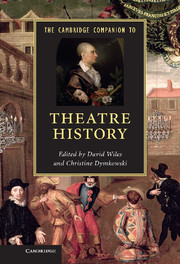Book contents
- Frontmatter
- Contents
- Illustrations
- Notes on Contributors
- Acknowledgements
- Part I Why?
- Part II When?
- Part III Where?
- Part IV What?
- Part V How?
- 15 The nature of historical evidence: a case study
- 16 The visual record: the case of Hamlet
- 17 Museums, archives and collecting
- 18 Re: Enactment
- 19 The internet: history 2.0?
- Index
- References
16 - The visual record: the case of Hamlet
from Part V - How?
Published online by Cambridge University Press: 05 February 2013
- Frontmatter
- Contents
- Illustrations
- Notes on Contributors
- Acknowledgements
- Part I Why?
- Part II When?
- Part III Where?
- Part IV What?
- Part V How?
- 15 The nature of historical evidence: a case study
- 16 The visual record: the case of Hamlet
- 17 Museums, archives and collecting
- 18 Re: Enactment
- 19 The internet: history 2.0?
- Index
- References
Summary
‘Look . . . upon this picture, and on this’
(Hamlet, III.iv.53)Like Hamlet, confronting his mother with portraits of his father and of the brother who murdered him, theatre historians work within a realm of loss, attempting to re-member who (and what) has disappeared. Yet visual traces of performance – engravings, paintings, drawings, cartoons and photographs – persist: ghosted images return to haunt us. Also like Hamlet, mapping one portrait’s features against another, inauthentic and authentic images of a father, what theatre historians most desire is a visual image that preserves the paradox of a ‘theatrical real’. For Shakespeareans, that ideal image might show costumed players at work in a 1590s theatre space, performing a moment recognisable as deriving from a particular play – even, perhaps, including spectators. In 1925, E. K. Chambers introduced a pen-and-ink drawing purporting to show just such a scene: since then, the ‘Peacham drawing’ – and the forty lines from Titus Andronicus transcribed below it – have undergone numerous interpretive changes.
- Type
- Chapter
- Information
- The Cambridge Companion to Theatre History , pp. 246 - 266Publisher: Cambridge University PressPrint publication year: 2012

